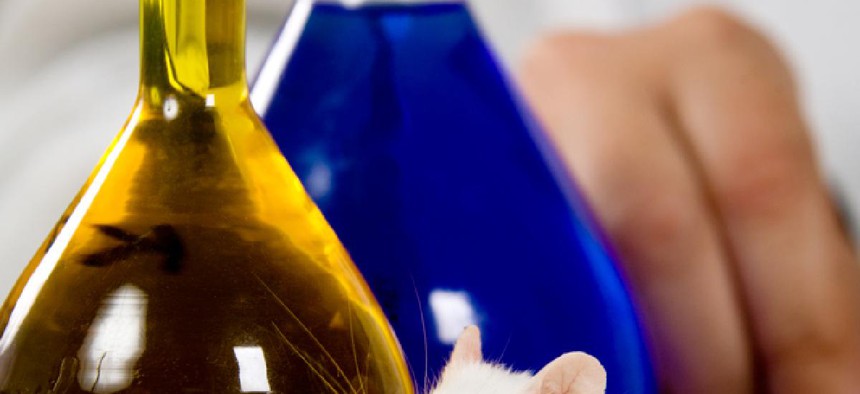
Image via Yurchyks/Shutterstock.com
What the Mouse Can Teach Us (And What It Can't)
NIH is looking at a high tech alternative to testing on mice.
The humble laboratory mouse has taught us a phenomenal amount about embryonic development, disease, and evolution. And, for decades, the pharmaceutical industry has relied on these critters to test the safety and efficacy of new drug candidates. If it works in mice, so we thought, it should work in humans. But when it comes to molecules designed to target a sepsis-like condition, 150 drugs that successfully treated this condition in mice later failed in human clinical trials—a heartbreaking loss of decades of research and billions of dollars. A new NIH-funded study reveals why.
Sepsis is a life-threatening systemic infection. It can be caused by a variety of pathogens, including bacteria, viruses, and fungi. Serious consequences occur when tissues damaged by infection produce proteins sometimes called “alarmins” that send the immune system into overdrive. Traumatic injuries involving extreme blood loss or burns can set off the same dangerous response. To probe the molecular response to all of these triggers, the authors took periodic blood samples from 167 trauma (car crashes, falls) patients; from 244 patients with burns over at least 20% of their body; and from four healthy volunteers who had been injected with a low-dose bacterial toxin. Then they studied the activity of the genes in the white blood cells. Comparing the results, they found that of the 5,500 or so genes that responded to traumatic injury, 91% also played a role in burn response and recovery. And about 45% of these same genes were involved in recovery from the bacterial toxin exposure.
Mice, however, apparently use distinct sets of genes to tackle trauma, burns, and bacterial toxins—when the authors compared the activity of the human sepsis-trauma-burn genes with that of the equivalent mouse genes, there was very little overlap. No wonder drugs designed for the mice failed in humans: they were, in fact, treating different conditions!
But that doesn’t mean studying mice is useless. There’s still much the mouse might teach us. Mice, as the authors note, are more resilient to infection and mount a much more regulated immune response to pathogens than humans. While it takes relatively few bacteria in the bloodstream to make humans critically ill, it takes a million-fold more bacteria to sicken a mouse. Perhaps this is because mice nose around in some filthy places and can’t afford to overreact to every microbe? If we knew how these rodents limit the drama of their immune response, it might be useful for us humans.
But this study’s implications may well go beyond mice and sepsis. It suggests that we should not assume a mouse’s drug response will always accurately predict a human’s. It would be wise to monitor the activity of the genes and pathways of interest in humans and mice, to see whether a drug works the same way in the two species.
The new study provides more reason to develop better and more sophisticated models of human disease. More than 30 percent of all drugs successfully tested in animals fail in human trials. The NIH plans to commit $70 million over the next five years to develop “tissue chips”—miniature 3-D organs made with living human cells—to help predict drug safety and efficacy. Though this is high-risk research, these chips may ultimately provide better models of human disease and biology than the use of animals.
Image via Yurchyks/Shutterstock.com







